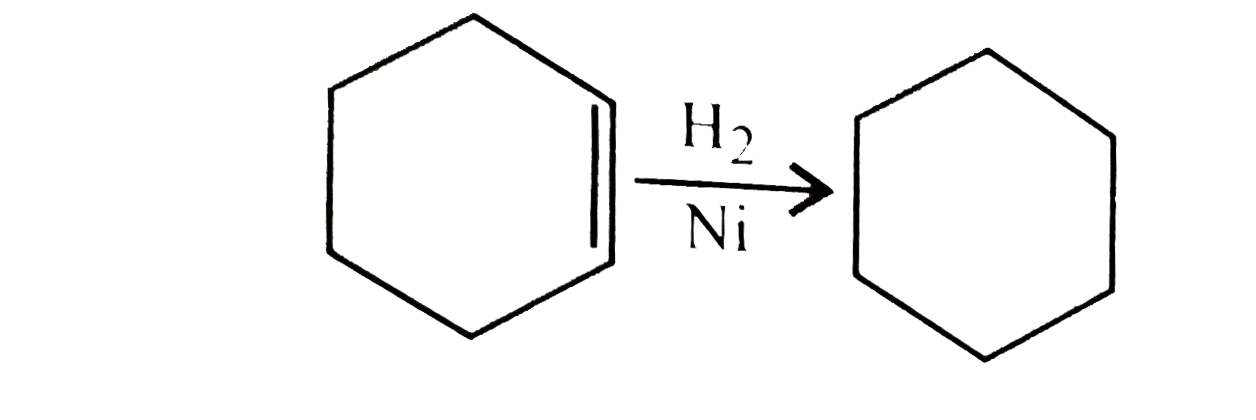Which of the following is correct if reaction quotient (Q)=1?
ΔG=0
ΔG∘=0
ΔGgtΔG∘
ΔG=ΔG∘
The correct Answer is:D
To solve the question regarding the reaction quotient Q and its implications when Q=1, we can follow these steps:
1. Understanding Reaction Quotient (Q):
The reaction quotient Q is a measure of the relative concentrations of products and reactants at any point in time during a chemical reaction. It helps us determine the direction in which the reaction will proceed.
2. Given Condition:
We are given that Q=1. This means that the concentrations of products and reactants are equal at this point.
3. Relating Gibbs Free Energy (ΔG) and Standard Gibbs Free Energy (ΔG°):
The relationship between the Gibbs free energy change (ΔG), standard Gibbs free energy change (ΔG°), and the reaction quotient (Q) is given by the equation:
ΔG=ΔG°+RTlnQ
where R is the universal gas constant and T is the temperature in Kelvin.
4. Substituting Q=1:
If we substitute Q=1 into the equation, we have:
ΔG=ΔG°+RTln(1)
Since ln(1)=0, this simplifies to:
ΔG=ΔG°
5. Conclusion:
Therefore, when Q=1, it follows that ΔG=ΔG°. This indicates that the system is at equilibrium, and there is no net change in the concentrations of reactants and products.
6. Correct Option:
Based on the analysis, the correct answer to the question is that when Q=1, it implies ΔG=ΔG°.
The reaction quotient Q is a measure of the relative concentrations of products and reactants at any point in time during a chemical reaction. It helps us determine the direction in which the reaction will proceed.
We are given that Q=1. This means that the concentrations of products and reactants are equal at this point.
The relationship between the Gibbs free energy change (ΔG), standard Gibbs free energy change (ΔG°), and the reaction quotient (Q) is given by the equation:
ΔG=ΔG°+RTlnQ
where R is the universal gas constant and T is the temperature in Kelvin.
If we substitute Q=1 into the equation, we have:
ΔG=ΔG°+RTln(1)
Since ln(1)=0, this simplifies to:
ΔG=ΔG°
Therefore, when Q=1, it follows that ΔG=ΔG°. This indicates that the system is at equilibrium, and there is no net change in the concentrations of reactants and products.
Based on the analysis, the correct answer to the question is that when Q=1, it implies ΔG=ΔG°.
Topper's Solved these Questions
- EQUILIBRIUMBOOK - AAKASH INSTITUTE ENGLISHCHAPTER - EQUILIBRIUMEXERCISE - Assignment (SECTION-C) (OBJECTIVE TYPE QUESTIONS (MORE THAN ONE OPTION ARE CORRECT)
10 Videos
- EQUILIBRIUMBOOK - AAKASH INSTITUTE ENGLISHCHAPTER - EQUILIBRIUMEXERCISE - Assignment (SECTION-D) (LINKED COMPREHENSION TYPE QUESTIONS)
8 Videos
- EQUILIBRIUMBOOK - AAKASH INSTITUTE ENGLISHCHAPTER - EQUILIBRIUMEXERCISE - Assignment (SECTION-A) (SUBJECTIVE TYPE QUESTIONS(ONE OPTION IS CORRECT)
45 Videos
- ENVIRONMENTAL CHEMISTRYBOOK - AAKASH INSTITUTE ENGLISHCHAPTER - ENVIRONMENTAL CHEMISTRYEXERCISE - ASSIGNMENT (SECTION-D) (Assertion - Reason Type Questions)
4 Videos
- GENERAL PRINCIPLES AND PROCESSES OF ISOLATION OF ELEMENTSBOOK - AAKASH INSTITUTE ENGLISHCHAPTER - GENERAL PRINCIPLES AND PROCESSES OF ISOLATION OF ELEMENTSEXERCISE - Assignment (Section-D) Assertion-Reason Type Question
15 Videos
Similar Questions
Knowledge Check
Which of the following is correct for the reaction ?
 AA is cyanohydrinBNucleophilic-addition reactionCThe above reaction is not shown by alkensDAll of these
AA is cyanohydrinBNucleophilic-addition reactionCThe above reaction is not shown by alkensDAll of these
Which of the following reactions is correct?
View SolutionWhich of the following reactions is correct.
View SolutionWhich of the following reaction is correct :
View SolutionWhich of the following is correct graph for the reaction?

View SolutionWhich of the following reaction (s) correct ?
View SolutionWhich of the following reaction are correct?
View SolutionMass action rato or reaction quotient Q for a reaction can be calculate using the law of masss action
A(g)+B(g)⇔C(g)+D(g)
Q=[C][D][A][B]
The value of Q decides whether the reaction is at equilibrium or not.
At equilibrium, Q=K
For an equilibrium process, Q≠K
when Q>K, reaction will favour backward direction and when Q<K, it will favour direction.
Answer the following questions:
In the following reaction:
2SO2(g)+O2(g)⇔2SO3(g)
the equilibrium is not attained. The rate of forward reaction is greater than that of backward reaction. Thus, which of the following is the correct relation between Kp and Qp?
View Solution
